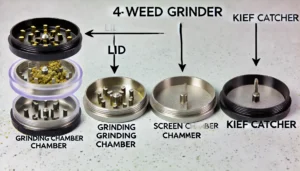Butterfly Weed Seed Collecting: How to Harvest and Grow Asclepias Tuberosa
What is Butterfly Weed?
Butterfly Weed (Asclepias tuberosa), a stunning orange-flowered perennial, is a native milkweed species found across North America, from Canada to Florida. This hardy plant thrives in fast-draining soil and full sun, making it a favorite among gardeners who want to attract butterflies—especially Monarchs.
Butterfly weed is not only beautiful but also plays a crucial role in supporting pollinators. However, growing it from seed requires patience and the right techniques. In this guide, we’ll cover how to collect, germinate, and plant butterfly weed seeds to ensure successful growth.
How to Collect Butterfly Weed Seeds
Butterfly weed and other milkweed species produce seed pods that mature in late summer to early fall. The key to successful seed collection is timing.
Step 1: Identify Mature Seed Pods
- Harvest seed pods when they turn light brown or beige but before they split open naturally.
- If pods start splitting, you may lose seeds to the wind, as they are attached to silky fluff that aids in dispersal.
Step 2: Prepare for Collection
- Wear gloves when handling the plant, as its sap can be mildly toxic.
- Use sterilized pruning shears to cut the pods from the plant.
- Sanitize tools between cuts using household disinfectants like Lysol or Pine-Sol to prevent disease spread.
Step 3: Extract the Seeds
- Slice open the pods carefully using a utility knife.
- Remove the seeds and place them in a bucket outdoors for 2-3 days to let the wind naturally remove excess fluff.
- Stir the seeds occasionally to ensure all fluff is loosened.
Step 4: Store the Seeds
- Place the seeds in a sealed plastic bag with moistened perlite.
- Store them in the refrigerator for at least three months to mimic the natural cold stratification process.
How to Germinate Butterfly Weed Seeds
Germination can be tricky, as butterfly weed seeds need cold stratification to break dormancy.
Option 1: Cold Stratification Indoors
- Moisten a paper towel or sand and place the seeds inside a zip-lock bag.
- Refrigerate for 3-6 weeks (30-45 days).
- Once stratification is complete, plant the seeds in 2-4” peat pots with well-draining soil.
- Cover lightly with soil (about ¼ inch deep).
- Keep in a sunny location or under grow lights until germination occurs (10-15 days).
Option 2: Direct Sowing in Fall
- Sow seeds outdoors after the first frost.
- Press into the soil about ¼ inch deep and cover lightly.
- Allow winter to provide natural stratification—seeds will sprout in spring when conditions are right.
How to Grow Butterfly Weed from Seedlings
Once your butterfly weed seedlings are established, they require proper care to thrive.
Transplanting Seedlings
- Best time: Early spring after the last frost.
- Choose a sunny location: Butterfly weed needs at least 6 hours of direct sunlight daily.
- Ensure well-draining soil: Avoid areas prone to waterlogging.
Watering
- Water lightly but consistently for the first few weeks.
- Once established, butterfly weed is drought-tolerant and only needs watering during dry spells.
Mulching
- Apply a 1-inch layer of mulch around plants to retain moisture and suppress weeds.
Fertilization
- Avoid excessive fertilization, as high nitrogen levels can reduce flowering.
- A light application of compost in spring is sufficient.
FAQs: Growing Butterfly Weed
How long does it take for butterfly weed to grow from seed?
- The entire process, from stratification to mature growth, can take 40+ days.
Can I grow butterfly weed in pots?
- Yes, but ensure the container has good drainage and is at least 8 inches deep for root development.
Do butterfly weed plants spread?
- While not invasive, butterfly weed can self-seed in optimal conditions.
How do I encourage more blooms?
- Deadhead spent flowers to promote extended blooming and prevent excessive self-seeding.
Final Thoughts
Butterfly weed is a valuable addition to pollinator gardens, offering vibrant blooms and essential nectar for butterflies and bees. While growing it from seed requires cold stratification and patience, the reward of seeing Monarch butterflies flock to your garden is well worth the effort.
By following this guide on seed collection, germination, and planting, you can successfully cultivate a thriving butterfly weed garden and contribute to pollinator conservation.













